Everything You NEED to Know About the Kalimar 3D Camera (35mm Film)
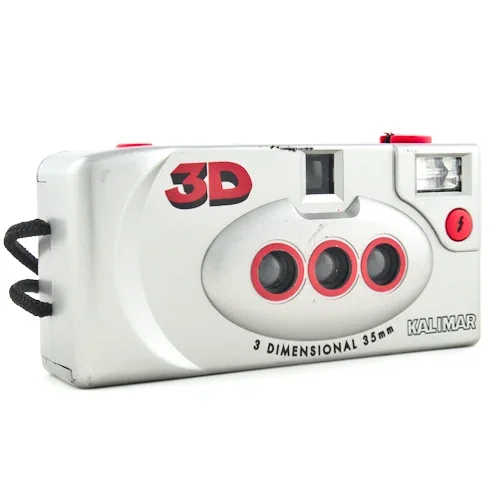
The Kalimar 3D camera is a vintage 3 lens stereo camera. With 3 lenses, the series of pictures produced by the camera would have been used to make lenticular prints, which would have a 3D effect without the need of wearing glasses or using a 3D stereo viewer.
The ImageTech 3D fx appears to be the same camera with a different paint job. This would make sense because the Kalimar 3D Wizard looks exactly the same as the ImageTech 3D Wizard. The only difference is that a different name was silkscreened onto the 3D camera.
All of the three lens models are often brought up as alternatives to the more well known four lens stereo camera models, the Nimslo 3D and Nishika N8000. Of all the 3D cameras I have used, the Nimslo 3D is the only camera that I would expect people to put more than a couple of rolls of film through.
Kalimar 3D Background
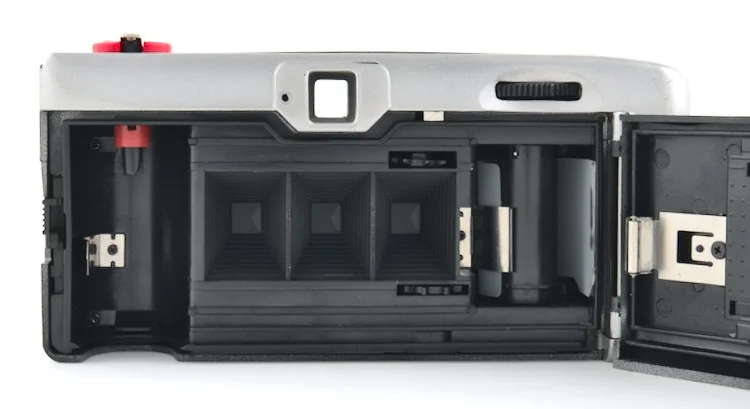
The Kalimar 3D stereo camera was originally sold in the late 1990s. As lenticular printing fell out of favor it became hard to find anyone with a working lenticular printer, so camera sales slowed.
Instead of using the lenticular cameras for images, some people would use it as a 3D stereo camera. By only using the outer 2 images, a stereo photography effect could be created using a stereo viewer. No 3D glasses needed. Though it would be a waste of film as the middle image would not be used.
Some years ago a bunch of new old stock cameras hit the liquidation market. Originally, the camera was used for making 3D lenticular prints. Unfortunately, I am not aware of any option to get lenticular prints made.
The Kalimar 3D stereo camera, along with other stereo cameras gained notoriety through photographers making animated 3D gifs and posting them to Tumblr. Ever since then stereo cameras have become popular for making 3D animated gifs.
The Kalimar, like every stereo camera, is now much more difficult to find and has become more valuable. eBay is the only place the cameras show up with any regularity. Price is going to be based on what people are willing to pay.
Kalimar 3D Camera Specs
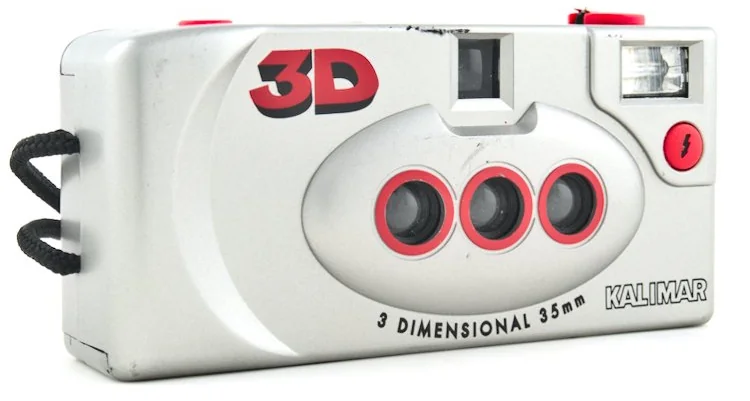
Kalimar 3D camera technical specifications:
- Uses standard 35mm negative or slide film. ISO 400 film recommended for best results.
- Film advance & rewind: Manual film advance with thumb wheel and folding crank (rewind)
- Image size: 3x 24x18mm half-frames
- Three matched lenses: 27mm focal length, f/8.0 (2 elements in 2 groups)
- Lens focal length & separation: 18.5mm, 37mm
- Focusing: Fixed focus from 4 feet to infinity
- Shutter speed: Fixed 1/100 of a second
- Viewfinder Type: Reverse Galilean (Plastic Garbage)
- Flash: Built-in with LED ready light, good for 4-15’ with ISO 400 film
- Power: 2 AA batteries
- Frame counter
- Made in China
- Dimensions: 143x68x40mm, weight 160g
These specs were taken from the Kalimar 3D camera manual, which may or may not be accurate. This is because Kalimar was not a manufacturer of cameras or lenses. Instead, Kalimar Inc. would act as a distributor by rebadging cameras from Taiwan, Hong Kong, Japan, Germany, and the Soviet Union.
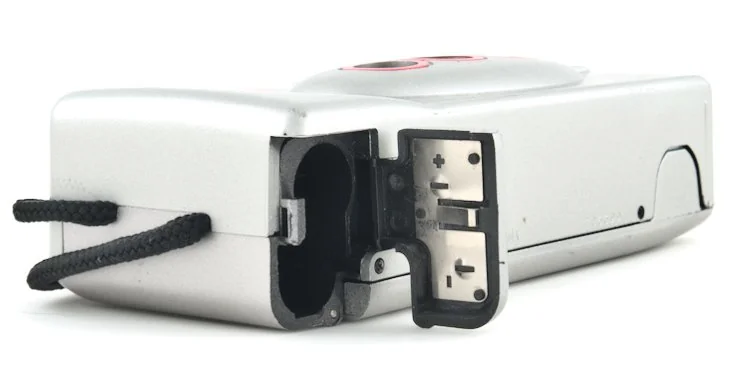
Where to Buy
Patience might be required to find a copy of the camera. There are usually a few available on online marketplaces. If the price seems high, wait and a lower priced Kalimar 3D camera should show up within a couple of weeks.
Affiliate Advertising Disclosure
Outside the Shot is a participant in the Amazon Services LLC Associates Program, an affiliate advertising program designed to provide a means for sites to earn advertising fees by advertising and linking to Amazon.com.
As an eBay Partner, I may be compensated if you make a purchase. I also participate in affiliate advertising programs with KEH and Adorama. More can be found on the Affiliate Discolsure page.
See current price and more information on:
Animated 3D GIF
An animated 3D gif can be created from digital film scans of the stereo images the Kalimar 3D captures. This can be done by layering pictures in a image editor such as GIMP or Adobe Photoshop.
The film images can be aligned by reducing the layer opacity and picking a point on the image subject to align all of the images to. The order of the layers should be film frame 1, 2, 3, and then back to 2. This order will allow the image to appear to loop forever.
Export the project to a gif and select a delay between frames of 150 to 200 milliseconds.
Kalimar 3D Camera Review
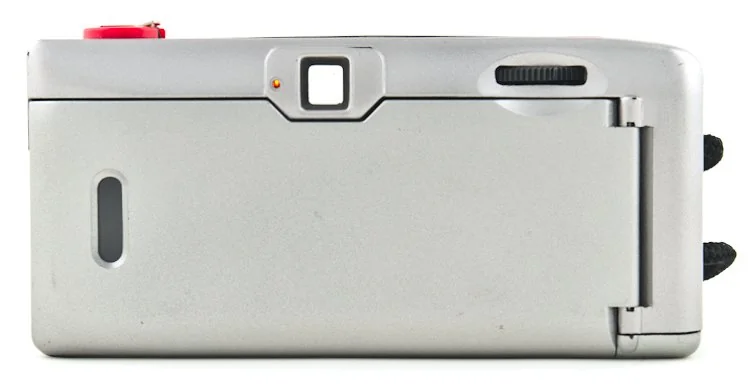
Unfortunately, this Kalimar 3D camera review isn’t going to be very positive as the only selling is that the camera has a lenticular lens design. Overall the Kalimar 3D camera has the build quality that is similar to cheap toy cameras.
The camera will eat batteries as once the flash is turned on, there is no way to turn it off without removing the batteries from the camera. The flash will just keep charging after every shot, which may not be what you want.
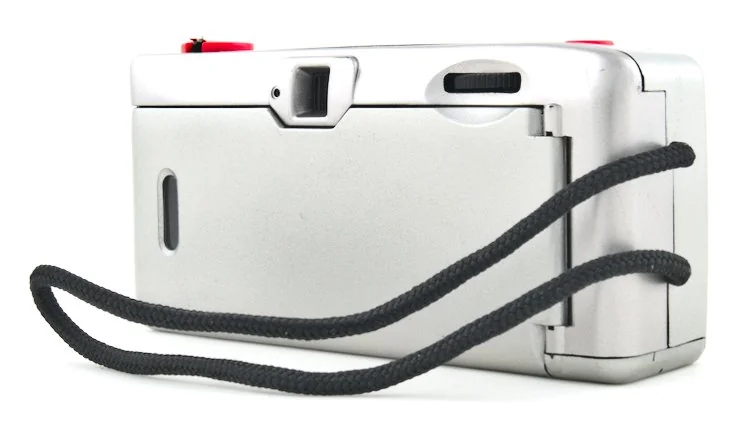
One saving grace is that it is similar in size to other compact cameras. This is great in comparison to the Nimslo N8000, which is comically large.
I could see the appeal if the camera was priced similarly to a disposable camera. That’s the level of quality you should expect.
Another problem is the lack of features and control over the lens aperture limits the usefulness for photography. There isn’t anything that can reasonably be done to control the exposure of the film. The shooting experience feels very one dimensional and there is very little to be creative with after the novelty wears off.
There is no reason to buy this camera over the other vintage options like the Nimslo 3D, ImageTech Trio 3D, or ImageTech 3D Wizard.